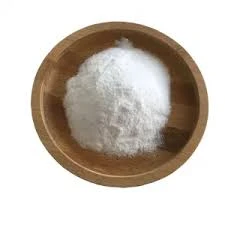Chemical Additives in Plastics Enhancing Performance and Safety
Plastics have become an integral part of modern life, used in everything from packaging to automotive components. The versatility of plastic materials is largely due to the incorporation of chemical additives, which enhance their properties and performance. These additives serve various functions, including improving strength, flexibility, durability, and resistance to heat and chemicals. However, the use of chemical additives in plastics also raises concerns regarding safety and environmental impact.
Types of Additives
The landscape of plastic additives is vast, encompassing several categories, each serving a distinct purpose
1. Stabilizers These additives are essential for enhancing the longevity of plastic materials. UV stabilizers combat deterioration caused by ultraviolet radiation, while heat stabilizers protect plastics from decomposition due to prolonged exposure to high temperatures. Without these stabilizers, many plastics would degrade rapidly, losing both functionality and aesthetic appeal.
2. Plasticizers Primarily used in flexible plastics, plasticizers increase the material's flexibility and workability. For example, phthalates have been commonly used to create softer compounds in PVC. However, the safety of certain plasticizers has come under scrutiny, leading to increased demand for non-toxic alternatives.
3. Fillers Fillers are added to improve mechanical properties, reduce production costs, and enhance the physical appearance of plastics. Common fillers include talc, calcium carbonate, and clay. They can increase stiffness, tensile strength, and reduce shrinkage during processing, making them crucial in various applications.
4. Flame Retardants To prevent ignition and slow down the spread of fire, flame retardants are often added to plastic products, particularly in electronics and construction materials. However, certain flame retardants have been linked to health issues and environmental concerns, prompting manufacturers to seek safer options.
chemical additives in plastics

5. Colorants Dyes and pigments are used to impart color to plastics, which can enhance product appeal and branding. These additives must be carefully chosen to ensure they comply with safety regulations, especially for products in contact with food or children.
Health and Environmental Concerns
While chemical additives provide significant benefits, they also pose potential health risks. Some additives, like certain phthalates and flame retardants, have been associated with endocrine disruption and other health issues. As a result, regulatory bodies in various regions are tightening regulations on the use of hazardous substances in plastics.
Environmental concerns also surround the use of additives. Many chemical additives can leach out of products into the environment, contributing to pollution. The durability of plastics means that once they enter the environment, they can persist for decades, leading to a toxic legacy.
Moving Towards Safer Alternatives
In response to these concerns, there is a growing trend towards developing safer, more sustainable additives. Biobased plasticizers and non-toxic colorants are examples of initiatives aimed at reducing the environmental and health impacts of plastics. Additionally, the increasing emphasis on recycling is encouraging innovation in additive technologies to create materials that can be reused without degrading performance.
Conclusion
Chemical additives play a critical role in the performance and applicability of plastics across countless industries. While they provide essential benefits such as enhanced durability and flexibility, concerns over health and environmental impacts cannot be overlooked. The industry must continue to innovate and prioritize the development of safer additives and sustainable practices. As consumers become more aware of these issues, the demand for responsible sourcing and production methods in the plastic industry will only increase, ushering in a new era of safer and more eco-friendly plastics.

